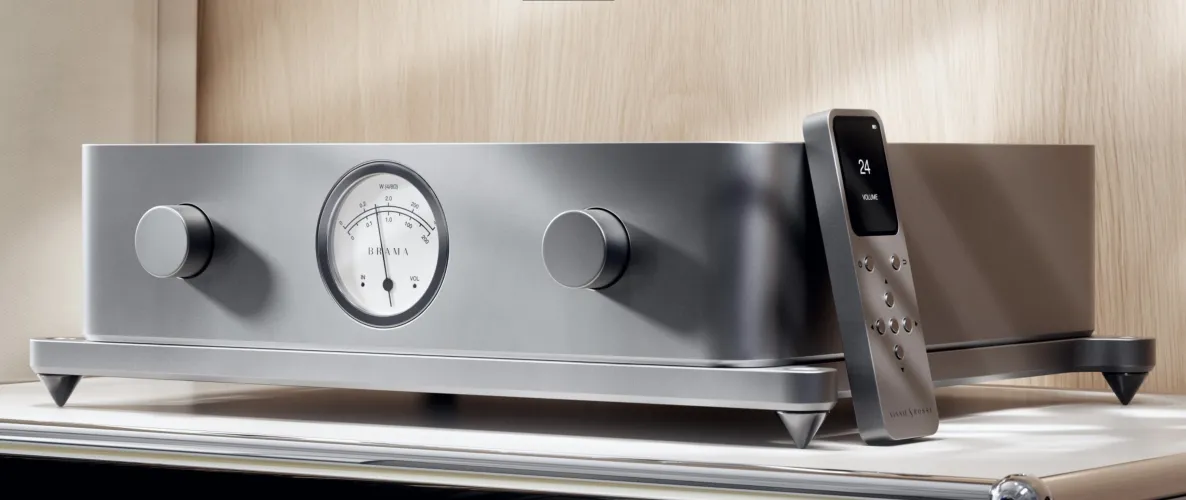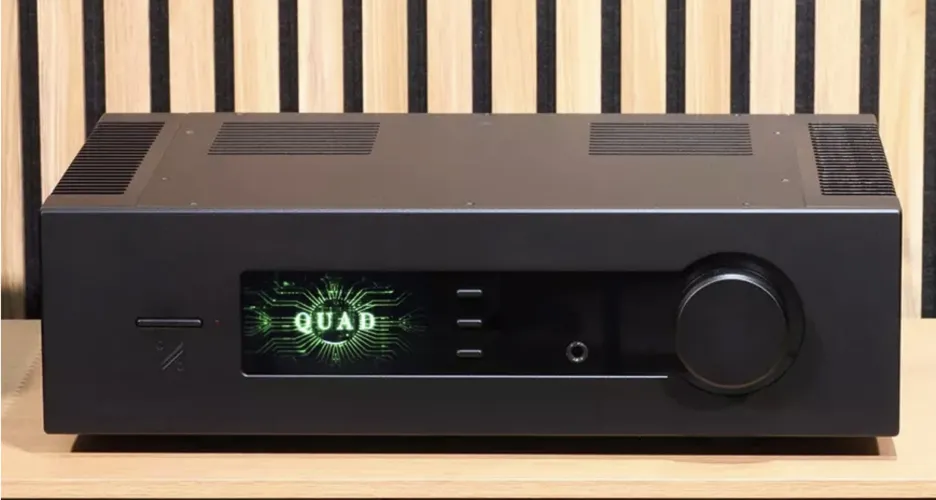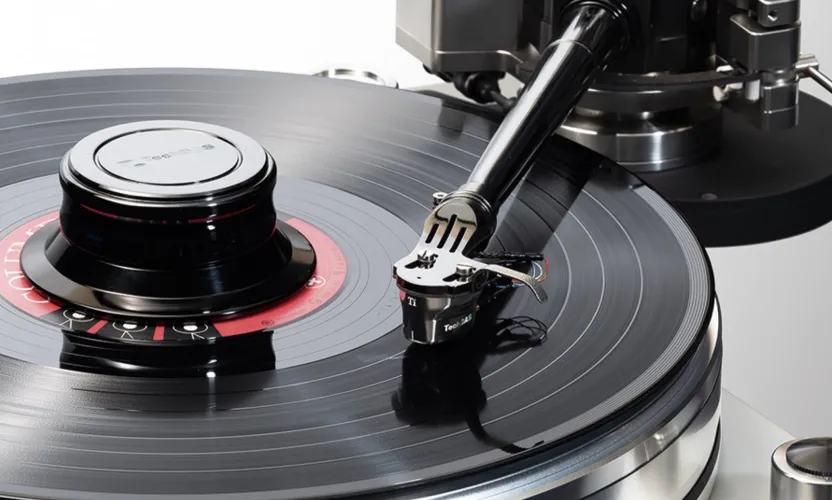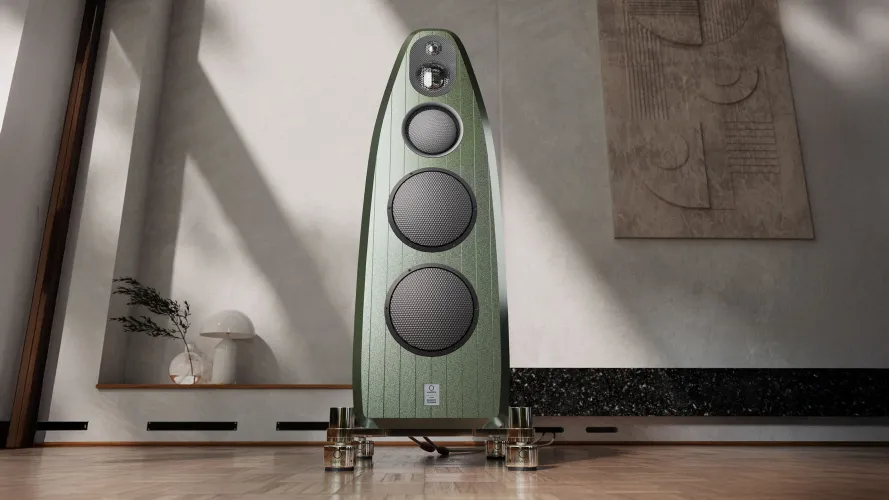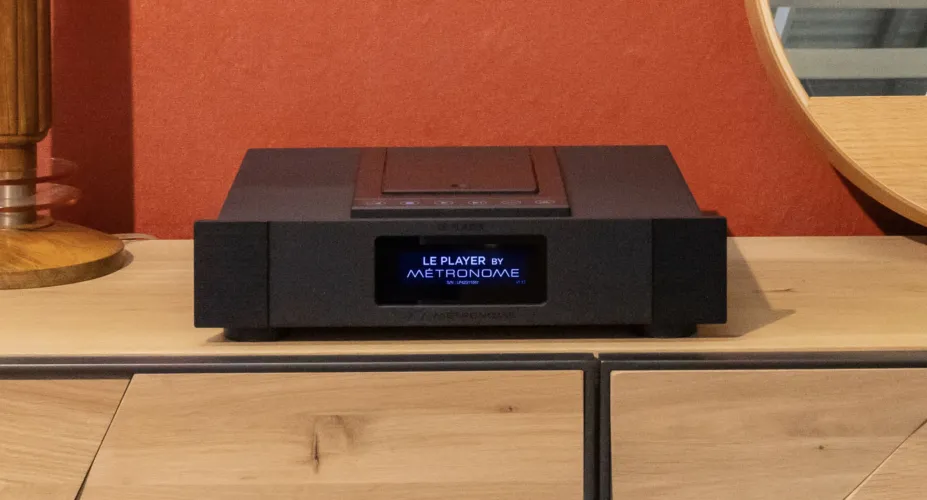
Review: CH Precision M10 Stereo power amplifier
Ultra low noise amp with an incredibly wide signal bandwidth
CH Precision is a bright star in the firmament of modern High End, but the company's top 10th series is designed to reconsider the boundaries of what is possible from equipment of any class. Today we are testing the two-block power amplifier CH Precision M10 Stereo - a device that flaunts innovative circuit solutions and offers mind-blowing sound quality.
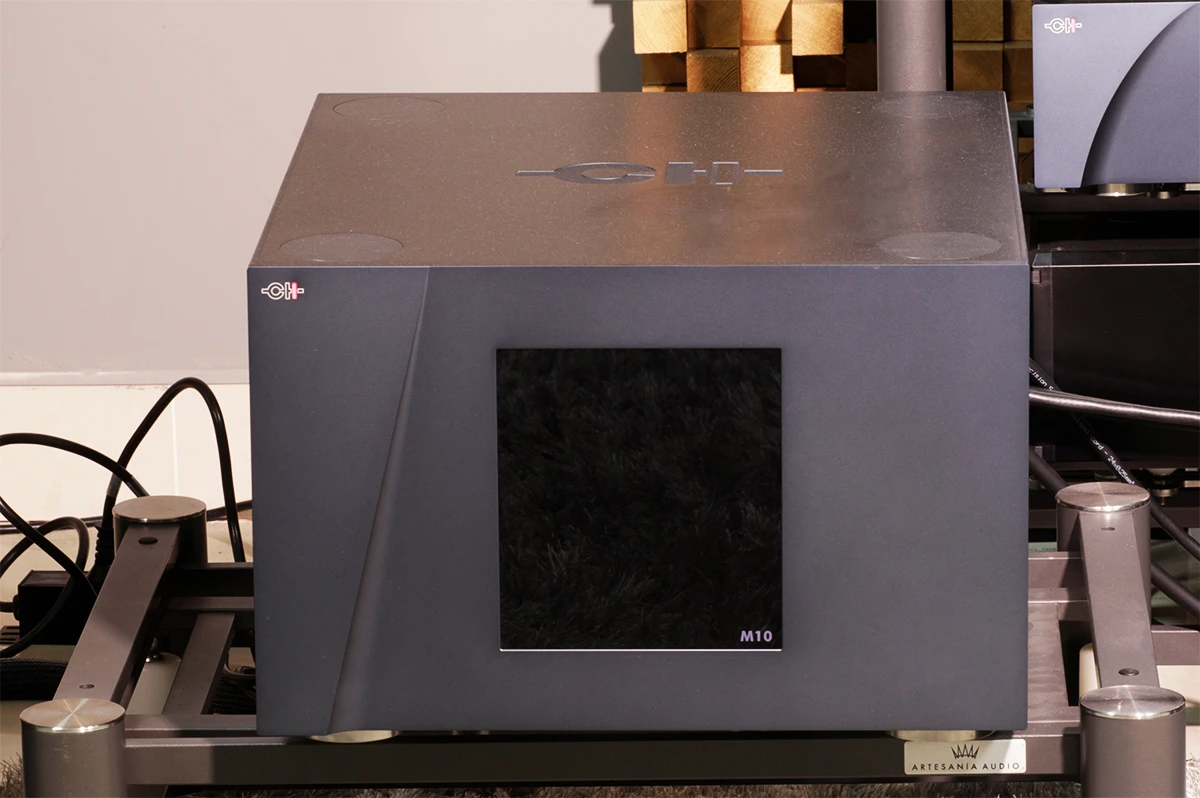
Design
In normal two-channel mode, the CH Precision M10 Stereo delivers 2 x 300 W into 8 Ohms load, increasing to 2 x 550 W into 4 Ohms and a staggering 2 x 900 W into 2 Ohms. When operating in bi-amplification mode, the power will reach 600 W into 4 Ohms, and bridged mode will offer unbeliveble 1,700 W into 4 Ohms. We can’t think of any speakers that would ask more from an amplifier than the CH Precision M10 Stereo offers.
This magnificence is provided by the circuitry of the amplifying sections - ultra low noise input stage with high slew rate, zero global feedback and full discrete class A design plus a similar low-noise output stage with adjustable feedback and full discrete class AB design.
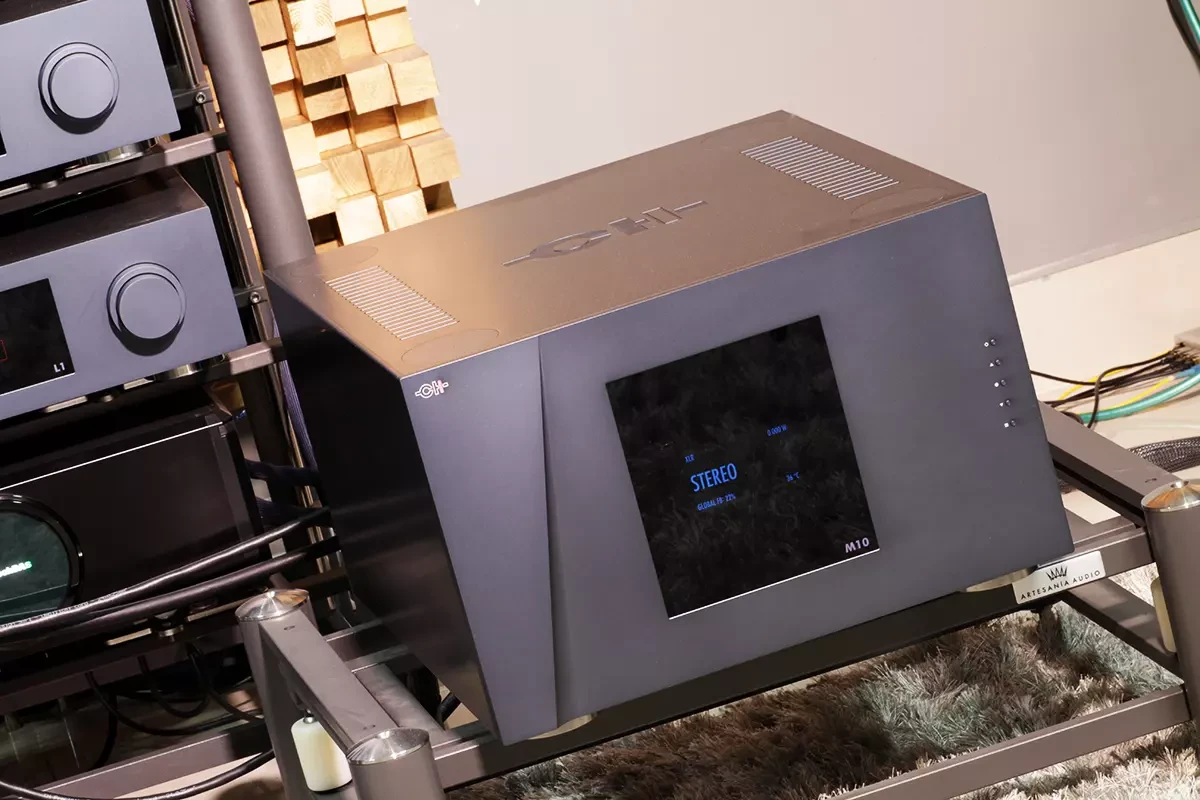
Technology
According to the company, the amplifier design uses a "unique new input stage that significantly outperforms existing circuits, all new circuit boards, re-laid to minimize induced noise and distortion and upgraded components throughout the signal path", while the output power figures have been increased by 1.5 times compared to the well-known (and critically acclaimed) M1.1 model. The system offers a unique user option for adjusting the local/global feedback ratio in 1% steps (from 0% to 100% ratio), and the gain trim is adjustable within 6dB - from +18dB to +24dB, in 0.5dB steps (stereo, monaural and bi-amp modes) and +24dB to +30dB, in 0.5dB steps (bridged mode). The total harmonic distortion plus noise (THD+N) is critically low – its level is less than 0.01% at 0% global feedback (100% local feedback) and less than 0.002% at 100% global feedback (0% local feedback). At any other values, the feedback ratio THD+N does not rise above 0.01%.
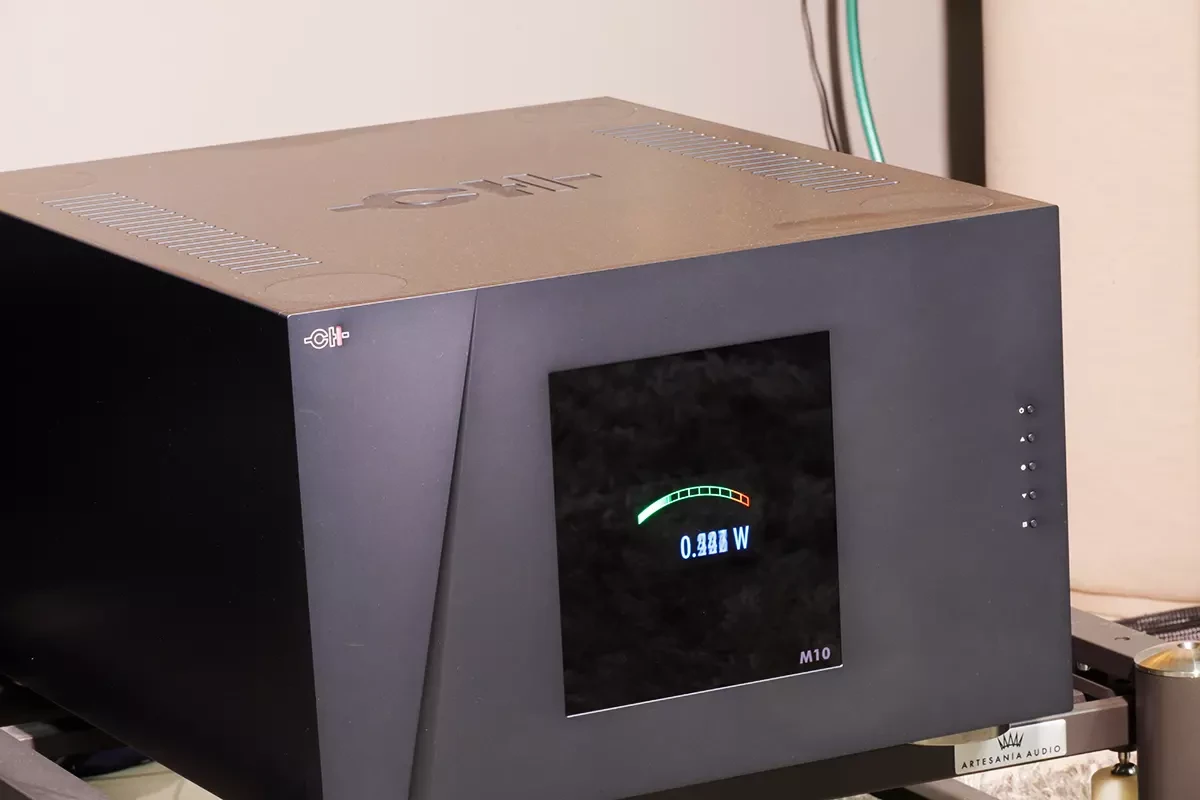
Intermodulation distortion is also less than 0.001%, and the signal-to-noise ratio (SNR, unweighted) is better than 132dB. But the most impressive thing is the signal bandwidth – it extends from 0 Hz to 500,000 Hz with an error of -3dB with the low pass filter disabled or up to 120,000 Hz with it enabled. In essence, this amplifier is an incredibly flexible device that allows you to fine-tune the damping factor (global feedback) and get the best results from any speakers.
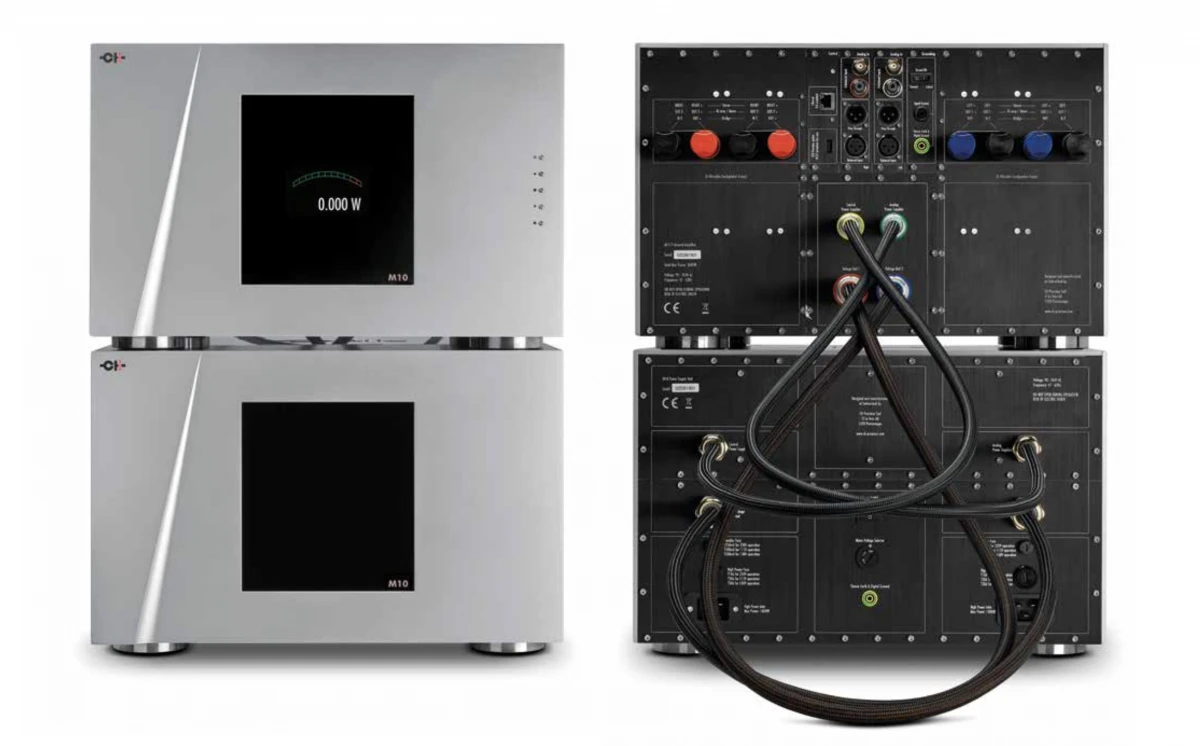
The CH Precision M10 Stereo is equipped with three analog inputs – on XLR (3.6 VRMS), RCA and BNC (1.8 VRMS) connectors. Input Impedance is switchable between 94 kOhms or 600 Ohms for balanced terminals and from 47 kOhms to 300 Ohms for single-ended – so, coupling the device with almost any modern preamplifier will not cause any difficulties. Amplifier output noise is less than -95 dBu (14 µVRMS).
Information about the amplifier operation is displayed on the 800×480 24bits RGB display. The external power supply is designed in a much heavier case than the device itself (the power supply weighs 78 kg versus 53 kg of the main unit) and has the option of multivoltage switching to 100V, 115V or 230V AC modes. In addition to the better sound quality when dividing the system into two blocks, the total weight of the monoblock system at 131 kg and its dimensions would be clearly unacceptable for most modern racks.

Looking inside the devices, removing the top covers of the case, you can easily experience shock and awe - filter capacitors of truly gigantic volume, more like liter jars, are used. No less delight will cause and anti-vibration system - rods screwed on top of the case with titanium supports provide an ideal path for the removal of unwanted case resonances.
In all other respects, the build quality of the CH Precision M10 is also to be applauded. The exceptional attention to detail, the monumental appearance, the luxurious display – everything literally screams quality.

Test system
CH Precision M10 Stereo was installed into top-of-the-line test system:
Turntable - TechDAS Air Force III Premium S;
Tonearm - Graham Phantom 3 9";
Cartridge - Dynavector DRT-XV1s;
Phonostage - CH Precision P10;
Preamplifier - CH Precision L1;
Loudspeakers - Sonus Victor GrandeLuna MarkII.
All components were given a 120-hour break-in period before listening. This system is also listed on the Hifiverse website as a reference.
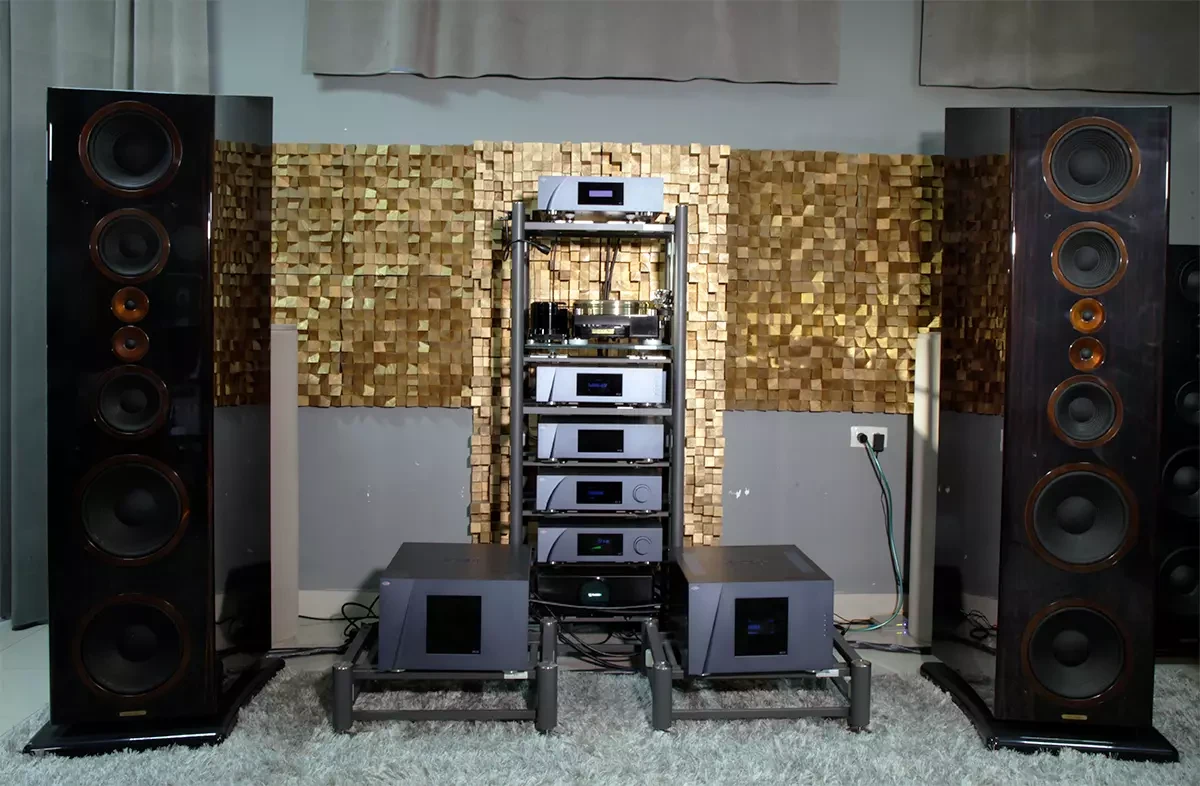
Listening

The CH Precision M10 Stereo delivered the best performance of Dire Straits' Love Over Gold album we have heard, offering a combination of grandiose stage scale and precise instrument localization. The keyboard part in Telegraph Road sounded incredibly impressive, remaining perfectly distinguishable against the background of all other sounds, and the guitar chords seemed to be felt by the skin.

Classics from the Berliner Philharmoniker, Sir Simon Rattle, Ludwig van Beethoven - Symphonien 1-9 offered absolute authenticity of timbres and colored the sound with exquisite textural richness. Microdynamic contrasts perfectly complemented the overall fluidity of the musical canvas, and macrodynamics guaranteed the effect of presence in the conservatory. The CH Precision M10 Stereo easily controlled our rather complex acoustic systems, building a powerful, textured and rich sound range in front of the listener.
It is precisely this monumentality and solidity of images that distinguishes extraordinary audio equipment from simply good equipment – but CH Precision M10 went much higher, it did not just lead the viewer by the arm into the hall, but also immersed him in a genuine audiophile nirvana. It seemed that it was impossible to tear yourself away from listening until all the LPs were finished.
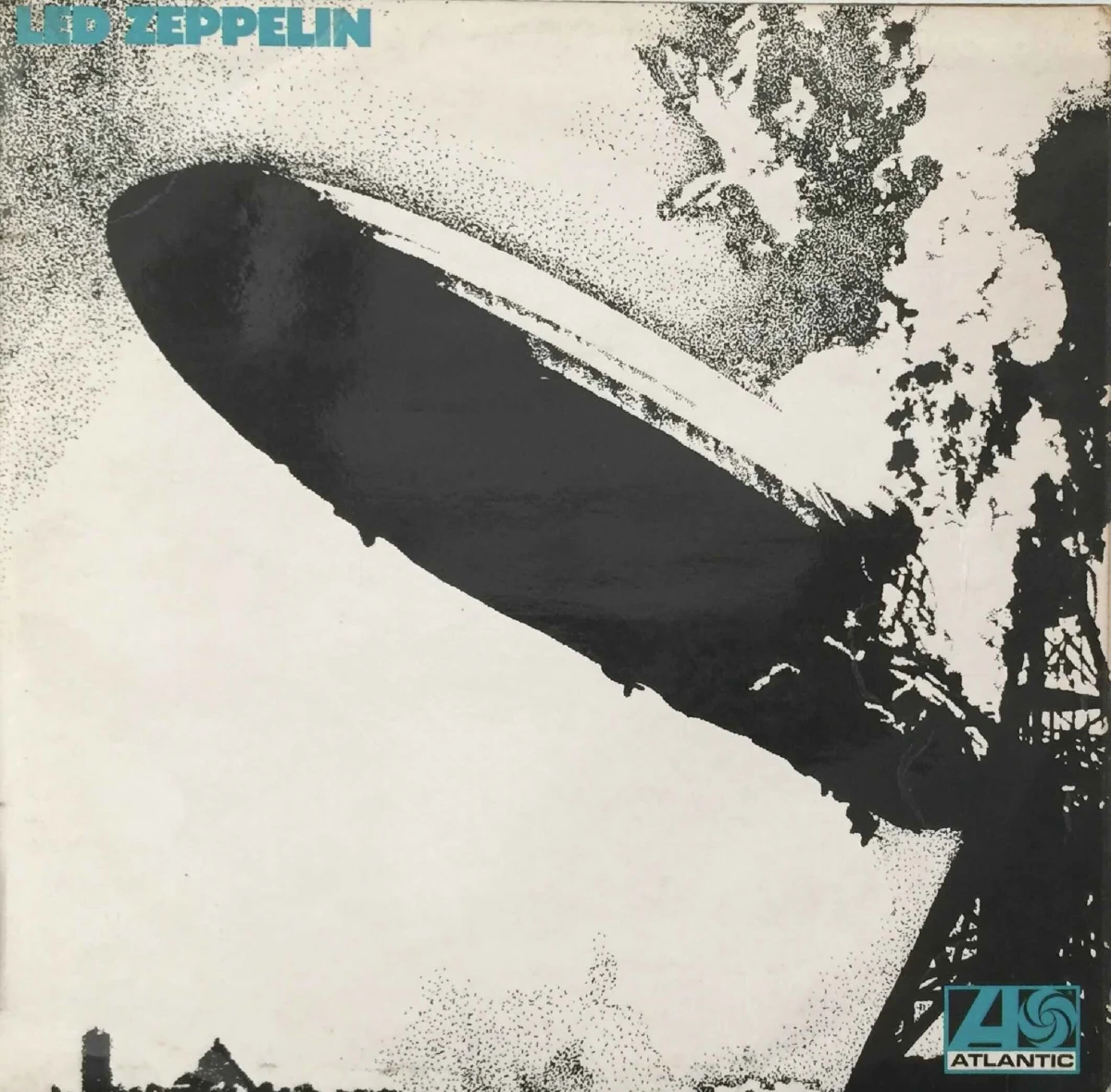
Switching to 1st UK pressing Led Zeppelin I showed the full power of the CH Precision M10 Stereo in forming a “wall of sound” – here attempts to dissect the sound into details crumbled against the general rhythm, mercury fluidity and naked nerve of emotions. Bravo.

Conclusion
The genre-impartial and literally breathing air into all recordings CH Precision M10 Stereo power amplifier is today one of the industry standards, a truly reference device in which it is impossible to find any flaws.
Evaluations
Stage
97%
Detailing
98%
Macrodynamics
97%
Microdynamics
96%
Bass extension
96%
Timbral authenticity
97%
Genre versatility
97%
Overall
97%
Specifications
This product is in the Hi-Fi and High End Electronics and Acoustics database
Power amplifiers stereo — CH Precision M10 Stereo
Model name
M10 Stereo
Input sensitivity (mV)
N/A
Input impedance (balanced) (Ω)
94000 - 600
Input impedance (single-ended) (Ω)
N/A
Output impedance (balanced) (Ω)
2 x 900
Output impedance (single-ended) (Ω)
N/A
Max current (A)
N/A
Output power (8Ω) (W)
2 x 300
Output power (4Ω) (W)
2 x 550
Gain (dBu)
N/A
Frequency response low +/- 3dB (Hz)
0
Frequency response high +/- 3dB (Hz)
500000
Signal to Noise Ratio (dB)
132
Total Harmonic Distortion + Noise (0% global feedback) (%)
0.01
Total Harmonic Distortion + Noise (100% global feedback) (%)
0.002
Max power consumption (W)
N/A
Damping factor
N/A
Dimensions (mm)
N/A
Weight (kg)
78 + 53
Official link
Particular qualities
Up to 500,000 Hz signal bandwidth
Power rating 2 x 550 W into 4 Ohms
THD+N does not rise above 0.01%
User adjustable the local/global feedback ratio in 1% steps


